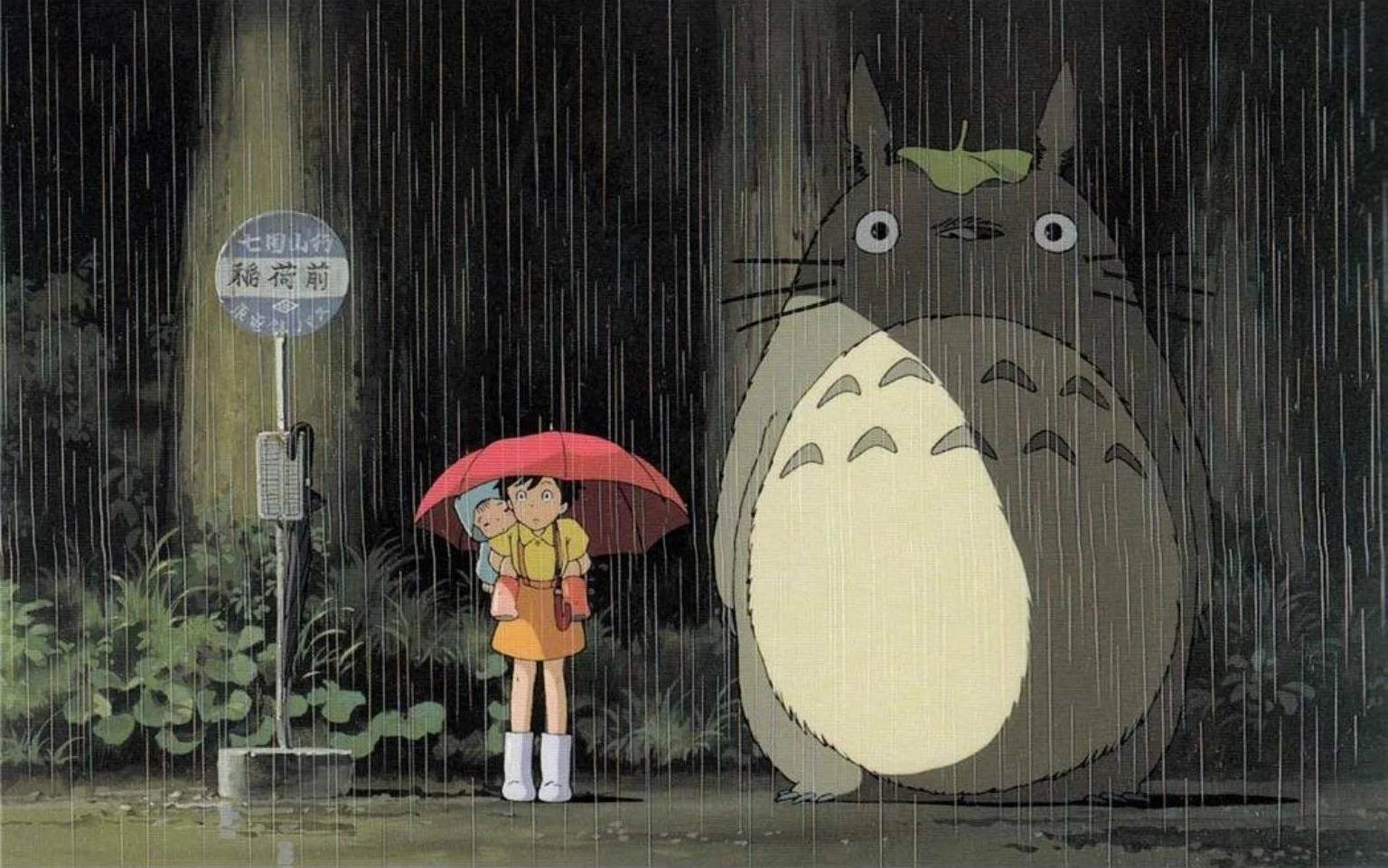Review: Early Japanese Animation (Barbican Theatre)
It is a rare privilege to witness the origins of a globally popular artform like Japanese anime, and even rarer to experience it with live musical accompaniment and traditional Benshi narration. This is what the Barbican’s screening of Early Japanese Animation offered on Sunday 5th June, with a remarkable selection of animated shorts screened as part of the Barbican’s Silent Film and Live Music season, which is now in its 11th year. A total of 8 short cartoons from 1925-1935 were shown as part of the programme, with live music composed by students at Guildhall School's Electronic and Produced Music Studio.
The programme of animation on offer was diverse, which satisfied the Barbican’s aims of offering a “glimpse into the beginnings of a rich history of Japanese animation”. It was clear that the selection of shorts, though varied in animated style, form, and narrative, were carefully chosen to give spectators a well-rounded understanding of the codes and conventions of early Japanese animation. Some of the selected animations drew upon traditions of fantasy too, including Japanese folklore, legend, and tradition, while others showcased the development of modernist art styles for which anime (certainly in the 1950s and 1960s) became widely known.
Perhaps the most intriguing short screened was Ubasuteyama (Sanae Yamamoto, 1925), one of three Yamamoto shorts included in the programme. Ubasuteyama has a visual style influenced by manga comic books, and is based on the old folktale of ubasute, in which an older family member must be left in an isolated place outside of their province to satisfy a person of authority (Mayer, 1948: 168). In Yamamoto’s animated version of the tale, the abandonment of people aged 60 or older is ordered by a Lord who despises elderly people. The narrative focuses on one son, who hides his parent because he is unable go through with the required abandonment. When the neighbouring province threatens the Lord’s safety unless he completes specific tasks, the old parent uses their wisdom to help the Lord complete them. The Lord then rewards the son by allowing the parent to remain in the province.
Ubasuteyama was a particularly effective short at the screening because of the performance of a Benshi (live narrator of Japanese silent cinema). The Benshi was central to the event’s authenticity, but was most effective during Ubasuteyama and other folktales such as The Pot (Sanae Yamamoto, 1925) and The Blossom Man (Yasuji Murata, 1928) because of the deep-rooted history of oral storytelling in folklore. The Japanese Classic Animated Films archive documents the stylistic choices made in animations like The Pot, “In addition to the line-drawn detailed background and characterization, various interesting attempts are made, including using speech balloons with cut-out lettering for conversations.” (Fig. 1). The stylistic emphasis on speech balloons to signal vocality makes the role of the Benshi in the exhibition of Japanese animation even more valuable in the absence of sound. The role was performed expertly by Tomoko Komura, who not only voiced the animated characters, but in traditional Benshi fashion, narrated intertitles and made vocal sound effects reflecting movement and objects in the frame (Denison, 2015: 294-295).
In contrast with Ubasuteyama, Diseases Spread (Sanae Yamamoto, 1926), is a film that sits within animation’s longstanding political application as an informative, ‘useful,’ or educative medium, in that was originally created to promote public health and hygiene. This Ministry of Education-commissioned animation may have been a peculiar and less poignant choice to include in this programme, not least as it appeared to embody a different zeitgeist, as the short differed to the others included in the line-up. However, in a society that has experienced a COVID-19 pandemic, Diseases Spread resonated in ways that could surely not have been foreseen by Yamamoto almost a hundred years ago, yet no less anticipates animation’s contemporary role in mediating so-called “viral imagery” (Ehrlich 2021). Yamamoto’s animation demonstrates the effects of neglecting basic hygiene by showing germs spreading from a household, into a city, and finally across the whole of Japan. The germs begin as microscopic black marks but grow larger as they begin to spread. They eventually develop into grotesque anthropomorphised bacteria with facial features, and are non-verbal apart from funny, griping noises from the Benshi (Fig. 2).
Perhaps the biggest comedic moment for the spectators while watching Diseases Spread came when the public health advice, “wear masks” was announced (Fig. 3). The inclusion of the short was certainly intended to be humorous, if not topical, but its selection also mirrored a Japanese filmmaking tradition discussed by anime scholar Susan J. Napier (in a piece where she discusses Austrian psychologist Bruno Bettelheim in relation to fantasy). According to Napier, the fantastic “theorized that the exaggerated, grotesque and simply magical aspects of fairy tales allowed children to work through their own” (2018: 160). Although different in form, in Diseases Spread the germ functions as the fantastical element, COVID-19 becomes the modern fear of the spectator, and that the short serves to help them conquer this fear. The laughter of the Barbican crowd at the fantastical germs was certainly cathartic, and seemed to serve as recognition, perhaps even a cure, for a collective trauma.
Diverging from the educational messages in Diseases Spread, the later short Rhythm (Shigeji Ogino, 1935) is a four-minute-long abstract animation (Fig. 4). A departure from the visual conventions of the manga style, this short was a mesmerising black and white, cubism-inspired looped animation. Unsurprisingly (considering the title), the short was enhanced by the musicians from Guildhall School's Electronic and Produced Music Studio with their clever composition of instrumentals, 1980s-esque electronic effects, and percussion by Taichi Imanishi. It would be too easy to think of this animation as somehow inspired by Disney’s Fantasia (Ben Sharpsteen et al., 1940). In fact, this earlier anime film reinforces the idea that animation, and in particular abstract animation, was not only inspired by Hollywood, but rather was an influence on (and ran parallel to) assumed ‘Western’ develpoments in the medium.
There was much to learn from witnessing these rare and precious short films. Though many are available to view online, watching them with live music accompanied by the immersive Benshi narration as a group was certainly a unique experience. While all artistic practices, including cinema, could be said to build upon one another, there appears to be a special connection between these preserved animations and modern anime shown today. The programme offered at the Barbican gave a real sense of collective understanding of the artform in its early years, as well as an acknowledgement that there is so much more to learn about Japan’s rich animation history.
**Article published: June 10, 2022**
References
Denison, Rayna. 2015. Anime A Critical Introduction. London: Bloomsbury Academic.
Ehrlich, Nea. 2021. “Viral Imagery: The Animated Face of Covid-19.” Visual Resources 36, no. 3: 247-261.
Mayer, Fanny Hagin. The Yanagita Kunio Guide to the Japanese Folk Tale. Bloomington: Indiana University Press.
Napier, Susan J. 2018. “Fantasy, animation and trauma.” In Fantasy/Animation: Connections Between Media, Mediums and Genres, edited by Christopher Holliday and Alexander Sergeant, 158-174. London: Routledge.
Biography
Devon Douieb is a Social Media Officer in the third sector. She works with digital communities, creates content and delivers digital communications strategies. Devon completed an MA in Film Studies at King’s College London in 2017, where she was taught by fantasy-animation.org co-founder Dr Christopher Holliday. Her studies primarily focused on the representation of race and gender in popular cinema. Devon has worked in Disneyland Paris as a cast member, and her interest in Disney has expanded into a broader range of fantasy and animation (largely as a result of listening to the Fantasy/Animation podcast). She is also Fantasy/Animation’s Digital Communications Manager.








“Which would you choose, a world with pyramids or one without them?” is a central question within Hayao Miyazaki’s The Wind Rises. Released in 2013 by Studio Ghibli, The Wind Rises follows a young aeronautical engineer by the name of Jiro Horikoshi as he navigates through Imperial Japan while pursuing his dream “to create beautiful airplanes.” A real-life historical figure, Horikoshi (1903-1982) is known as the engineer behind the Mitsubishi A6M Zero fighting planes that Japan utilized throughout World War II. Although the film depicts these inventions, Miyazaki shifts the focus to Horikoshi’s life rather than his industrial accomplishments, presenting him as an idealistic dreamer living in a romanticized period of Japanese history. Using Horikoshi’s character as the anchor of my analysis, in this blog I will delve into how Miyazaki confronts the cursed dreams humanity holds through the pacing of the story, the film’s artistic style, and the portrayal of characters, arguing how Miyazaki’s narrative embraces the idea that all dreamers are free to pursue their dreams regardless of the circumstances or consequences.